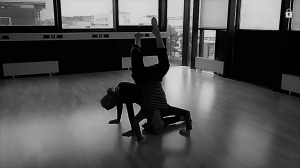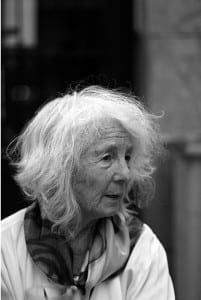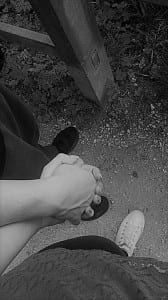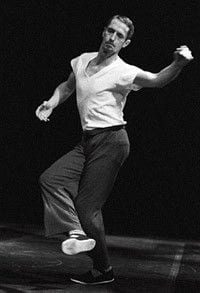The first exercise this week ‘hands on back’ proposed some weird sensations… once my partner had took her had off of my back I felt as though I was going to fall over, but I didn’t think that I was giving that much of my weight onto her hand. I could feel the warmth of Jess’s hand after she had removed it from my back which was quite soothing to feel like she was still there supporting me. Being the leader was the more difficult role, there was a lot of responsibility to ensure your partner didn’t crash into anyone else. Jess didn’t respond to the pressure of my hand on the right hand side but she did on the left, this meant I have to put a lot of pressure on the right.
This week I couldn’t grasp surfing and rolling, this was because I wasn’t releasing weight onto my partner. A lot of this was down to her rolling onto my hair multiple times and eventually I was scared to fully relax my body in case it happened again, I know that in the future I need to ensure that I tie my hair up properly so that this doesn’t occur again. Another reason was because I go to the gym, this comment didn’t make me feel too good about myself. I go to the gym to better my body and make me stronger for dance, so when I was told it isn’t working in my favour, it resulted in me having a negative attitude for the rest of the class.
I felt like the first of the two contact jams this week was my favourite, having a bit of feedback allowed me to know what I needed to work on to better myself. I felt much more relaxed in the jam and I tried to work on the reading we were given about being still in table top and we played with the idea of continuous movement. We found that when we became still in this position we lost all the momentum we had previously built up. The second jam wasn’t as successful, me and Hannah felt that we needed to enter the circle and we didn’t build a connection before we started, resulting in no trust, no momentum and lack of communication.
The reading I connected the most with was ‘Contact Improvisation: A Question’ by Daniel Lepkoff. A lot of the things I was reading I noticed through my own experiences in Improvisation. It explores the never before things that emerge from Contact Improvisation;
- Relationships
- Physical sensations
- Movement pathways
- Connections
I know that every time I have practiced Contact Improvisation I have found stronger connections with certain people and created new relationships with peers I haven’t worked with before. The reading also links into the ‘Thinking in Movement’ reading where it describes Improvisation as this evenings dance, meaning that no session of Contact Improvisation is ever the same, you are constantly creating new physical sensations and movement pathways and that an improvised performance only exists in the here and now.
Bibliography
Lepkoff, D (2008) Contact Improvisation: A Question, 1-2. Available from http://www.daniellepkoff.com/Writings/CI%20A%20question.php [accessed 25 October 2017].
Richard (2012) You don’t have to stop moving in table top – be an underdancer [blog] 22 December. Available from: http://contactimprovblog.com/you-dont-have-to-stop-moving-in-table-top-be-an-underdancer/ [accessed 25 October 2017].
Sheets-Johnstone, M. (2017) Thinking in Movement. Contact Quarterly, Vol 42: 1, pp. 7-12.


 Simone Forti
Simone Forti
